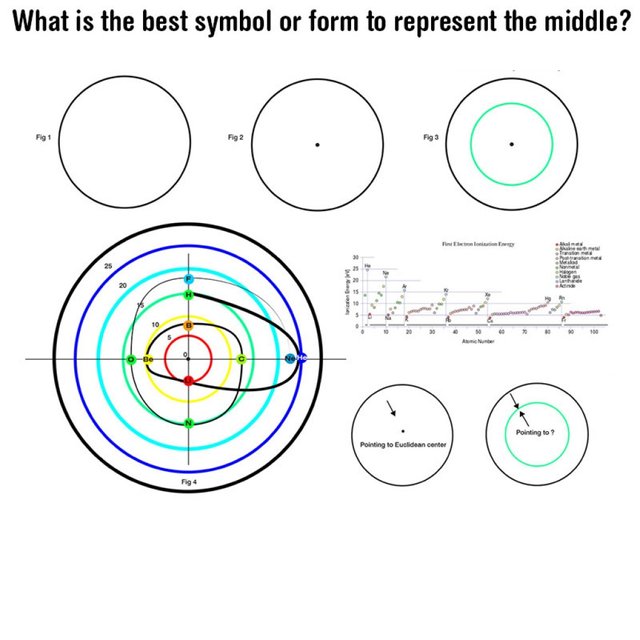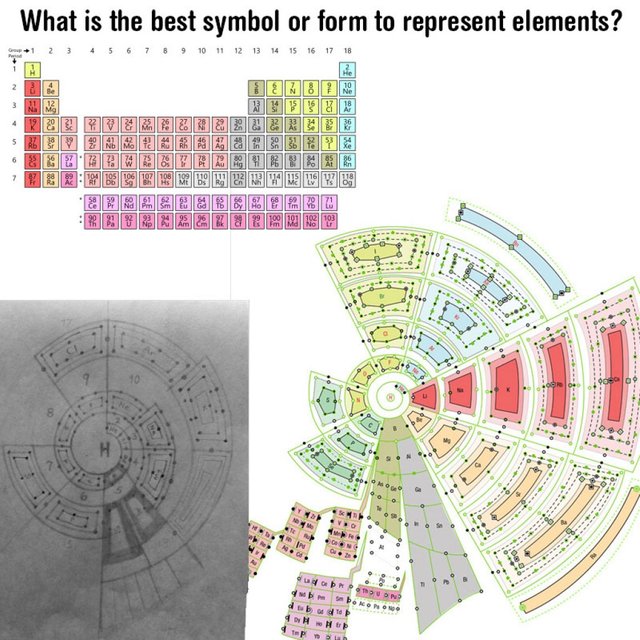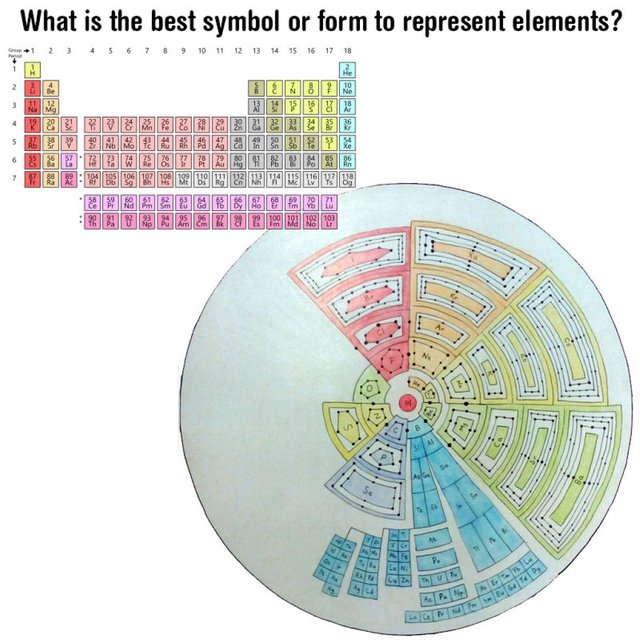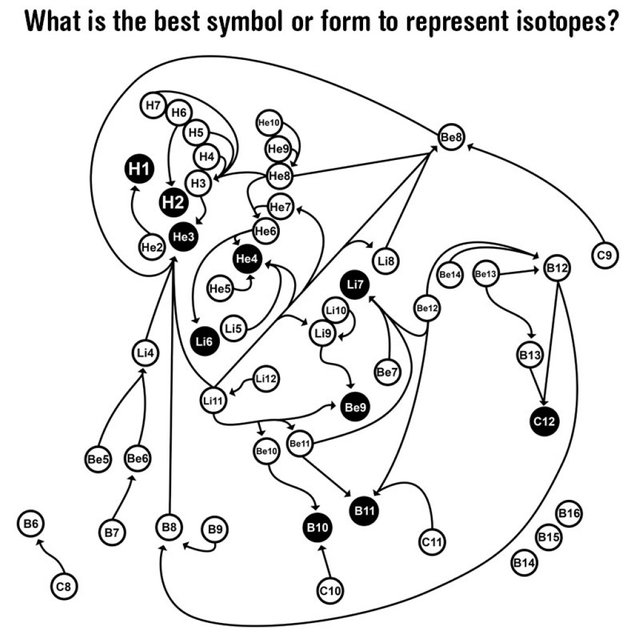Periodic Table and Isotope Spiral Interface
Where is the middle of a circle?
If you ask where the center of the circle in fig 1, common sense will say fig 2. However if we graph the electron ionization energy in a spiral, we see the middle of all the combined energy is located where the green circle is in fig 3. The middle point and the edge of the circle are both border points while the green circle is the average energy between those points and therefore the center.

The Periodic Table of Elements displayed as a spiral, rather than a chart of columns and rows. Walter Russell created a spiral table in his book "A New Concept of the Universe", among other people who have arranged it in a spiral. The Chromalendar interfaces all data and information into spiral interfaces, not only Chemistry. In addition, the Chromalendar associates time with information. Perhaps similar to Gematria, where Hebrew letters represent numbers as well as phonemes.

The Periodic Table of Elements is enhanced by this spiral by showing the electron shells of each element, how each element acquires new shells (shells displayed inward rather than outward). Rather then using Latin letters to calculate chemistry problems, we are trying to advance semiotics, to create advanced symbols for computation. If we take the analogy between Roman numbers and Arabic numbers and how much easier it is to do math using Arabic numbers. It's necessary to advance the population to understand these abstract geometries and concepts, we can achieve this by using symbols more advanced than Latin letters.

Interfacing particle #physics information into a spiral. A chart of nuclear #isotopes that displays stable and non stable isotopes and path of decay. Black circles are stable isotopes that do not decay. White circles are non-stable isotopes. Notice how some non-stable isotopes such as Lithium 11 have multiple paths of decay. "To make things easier to understand", this is the challenge of all languages and #philosophy. The Chromalendar is an advancement of language and how we represent knowledge.
